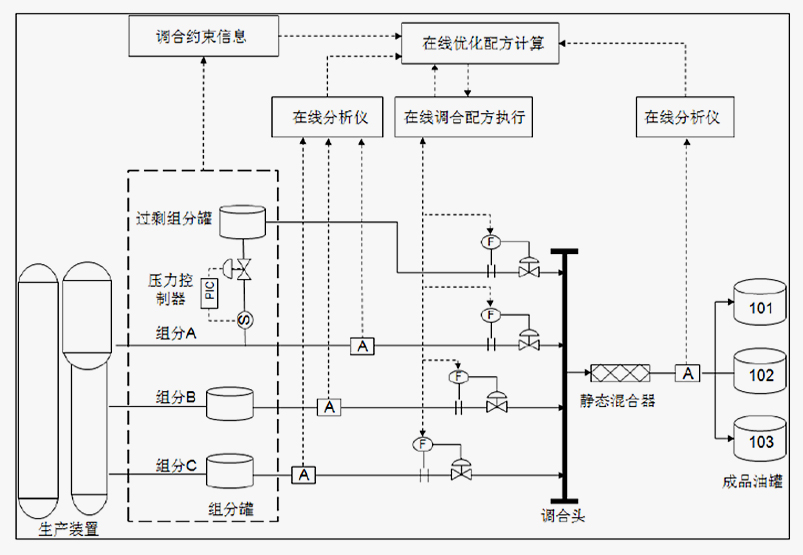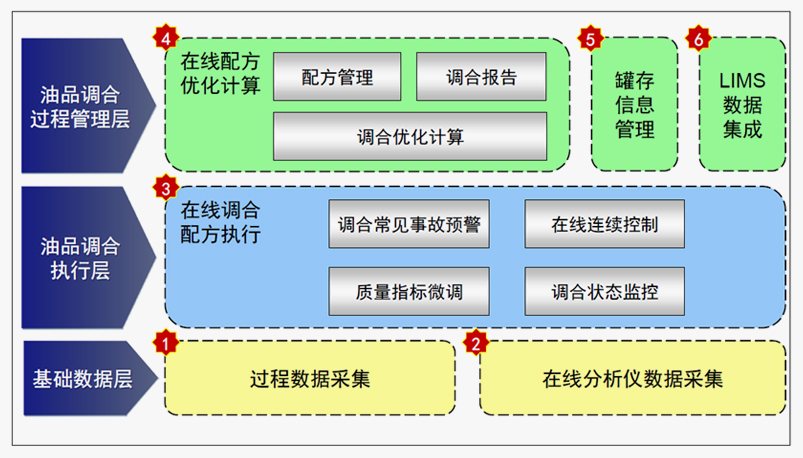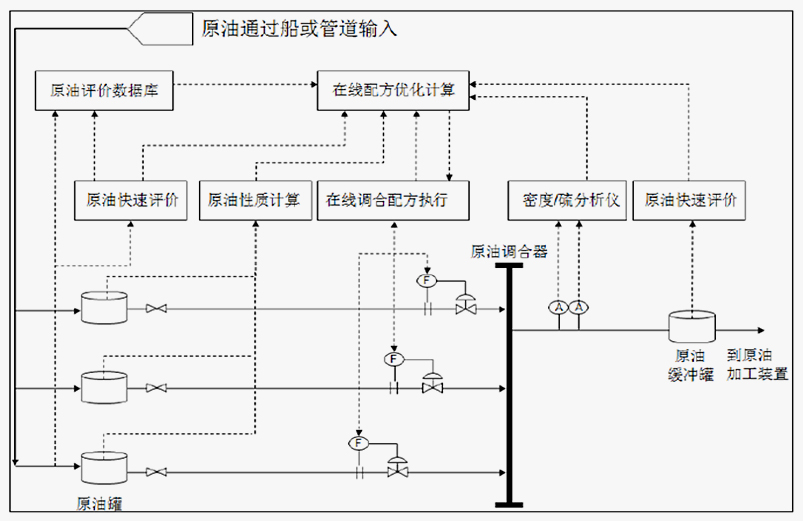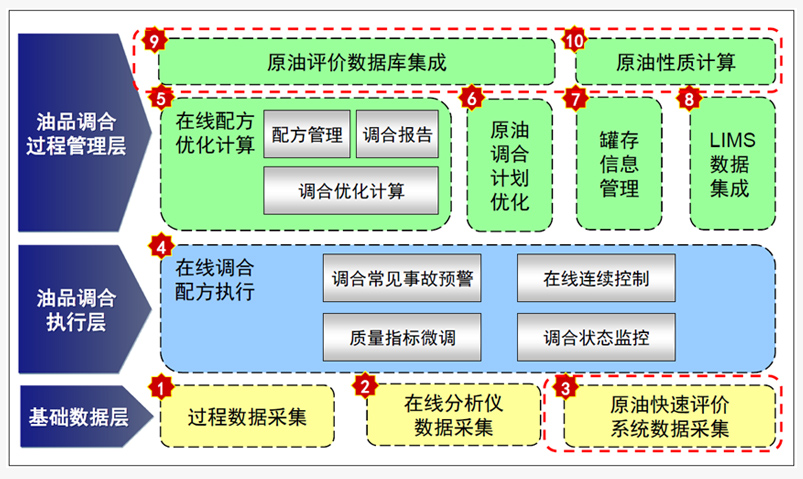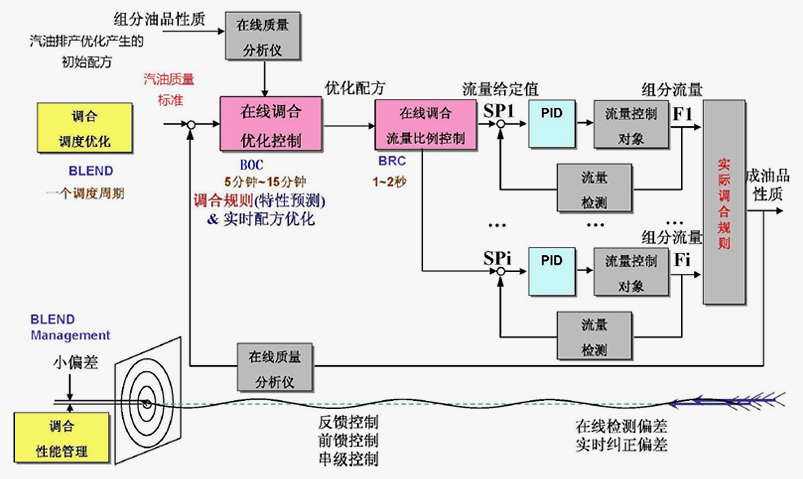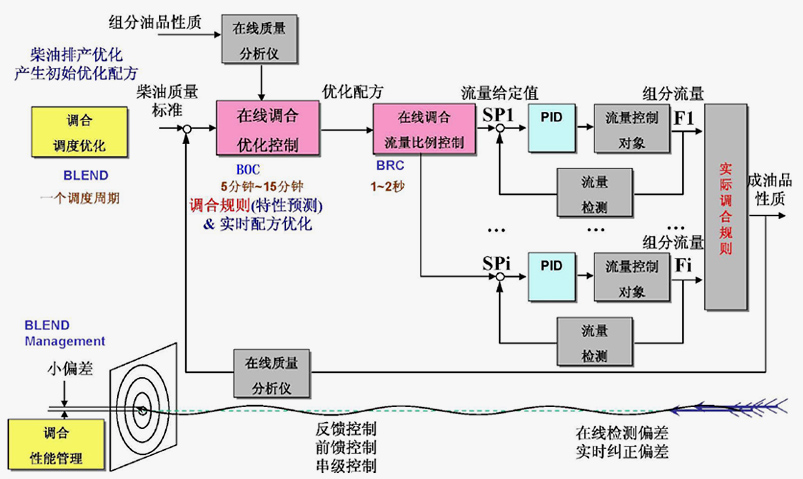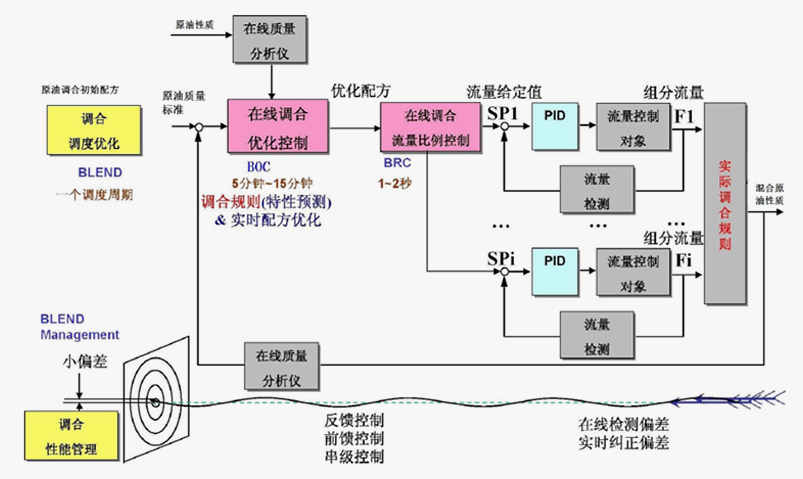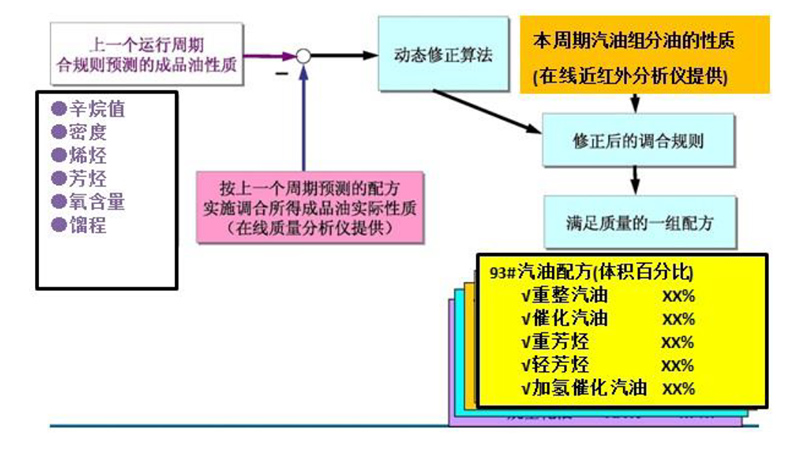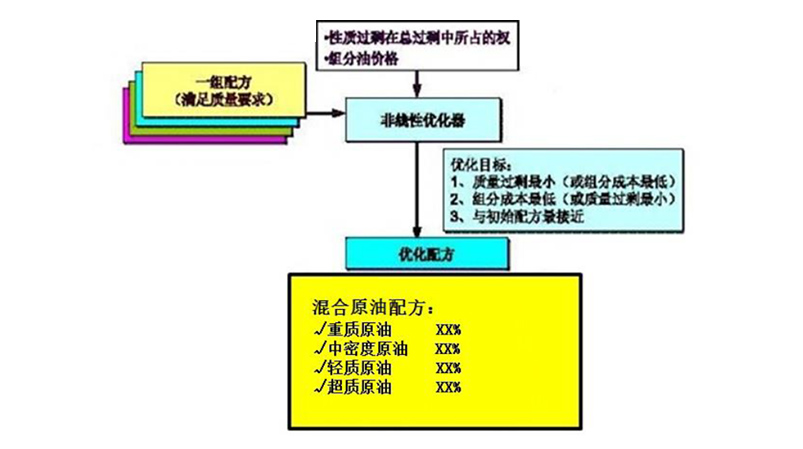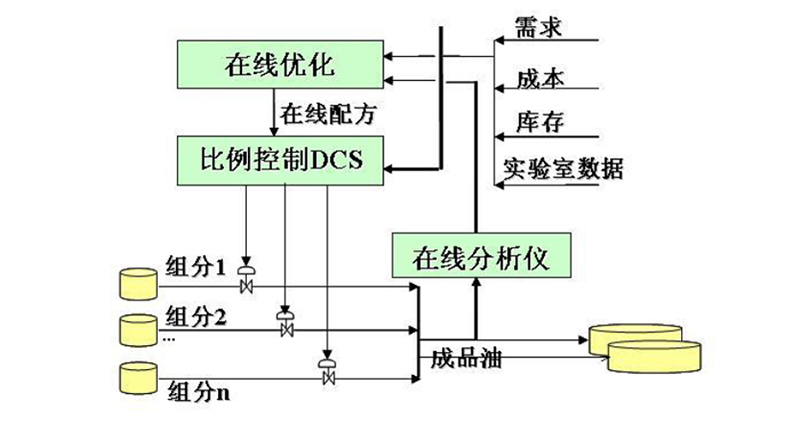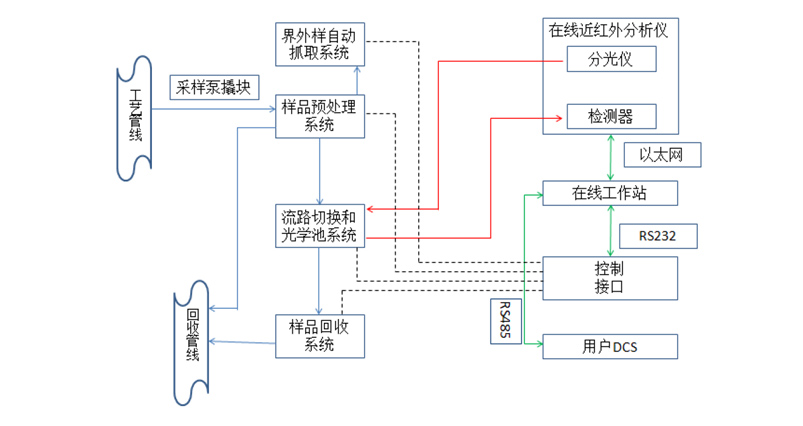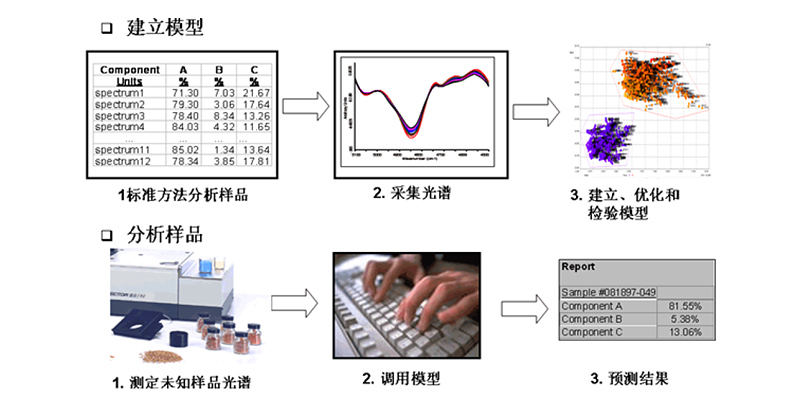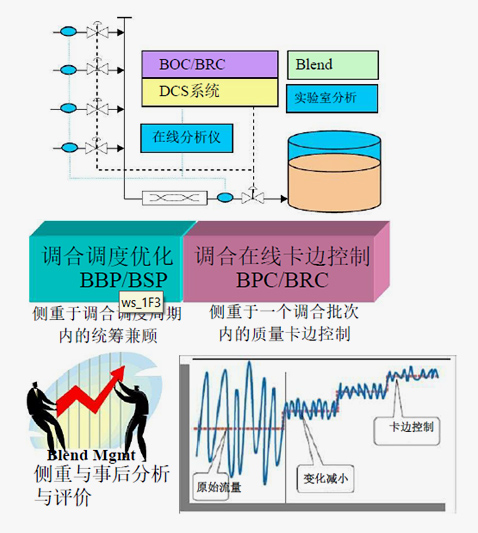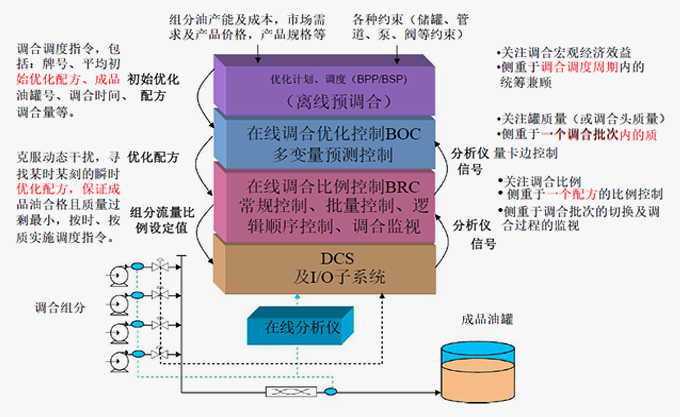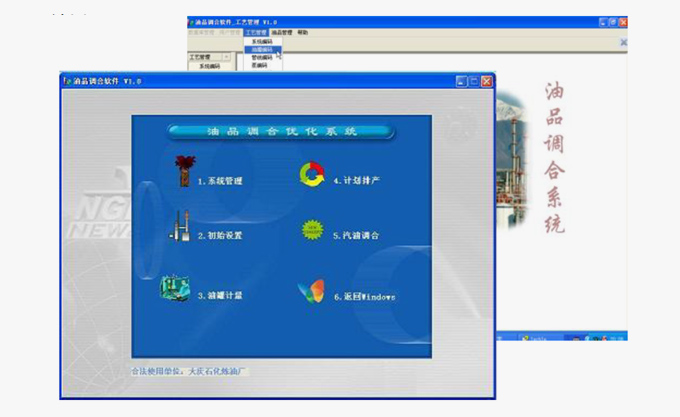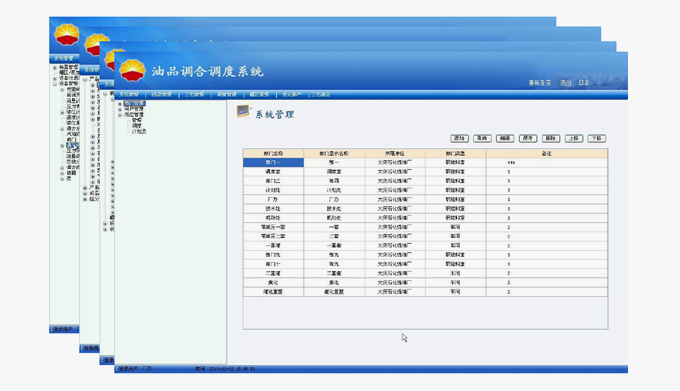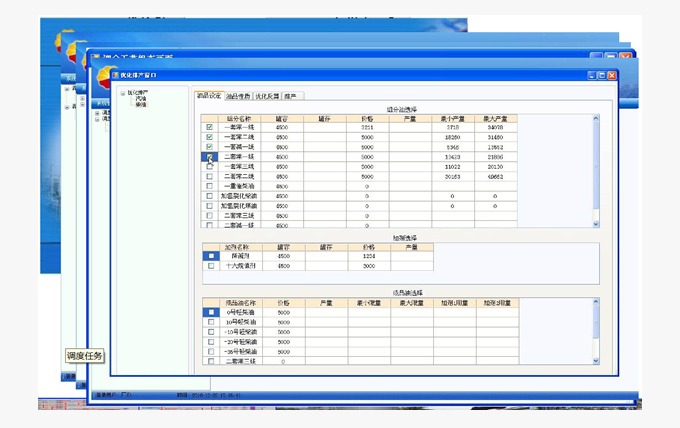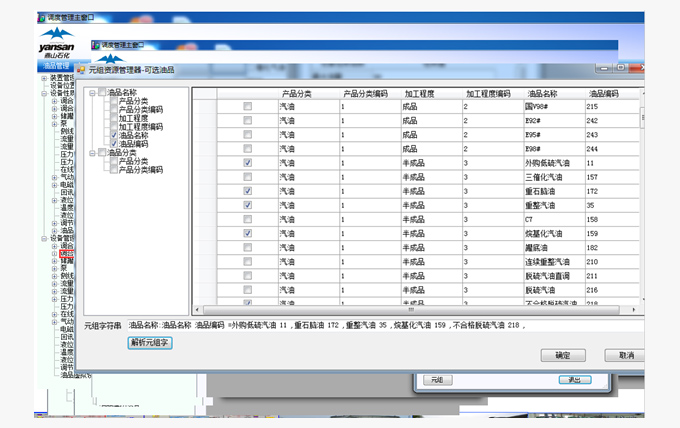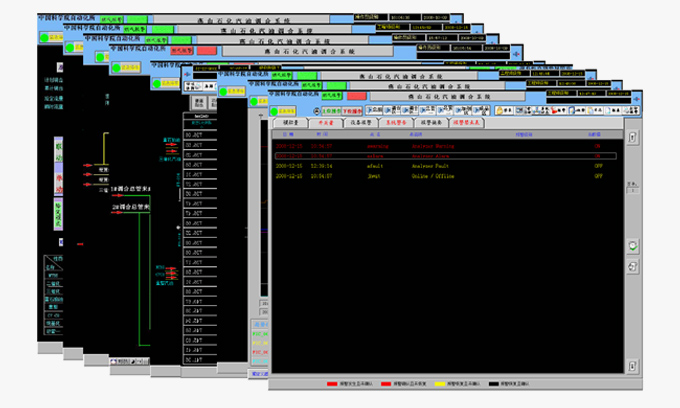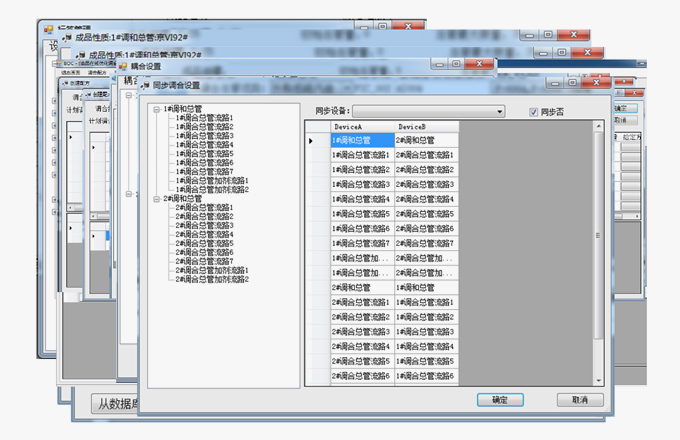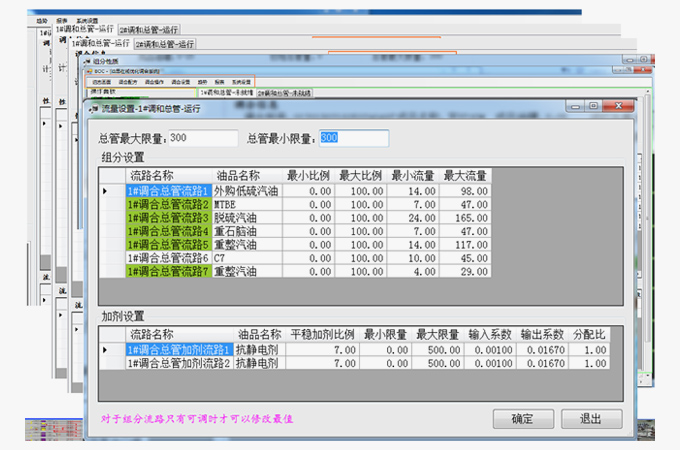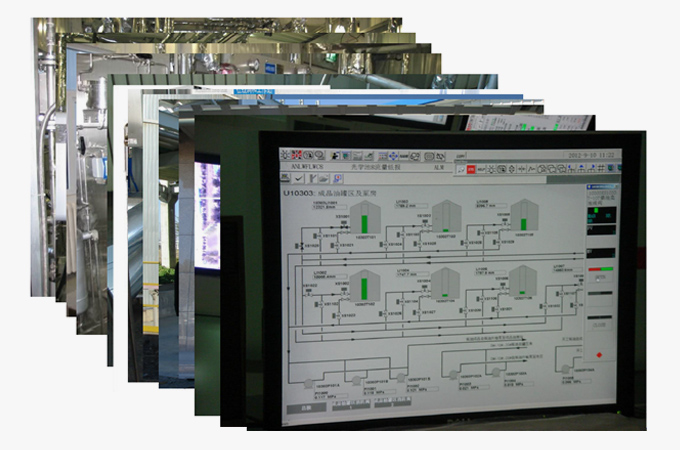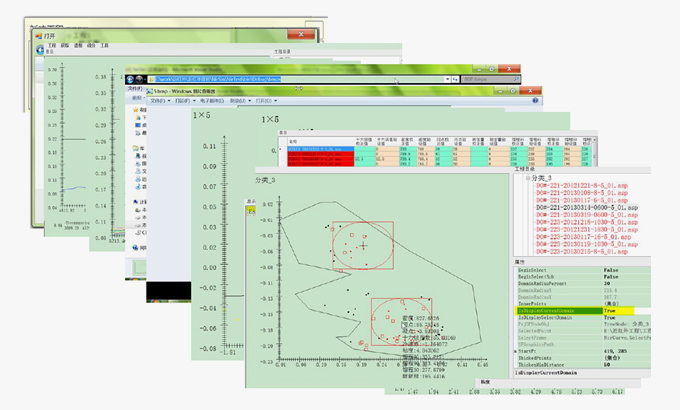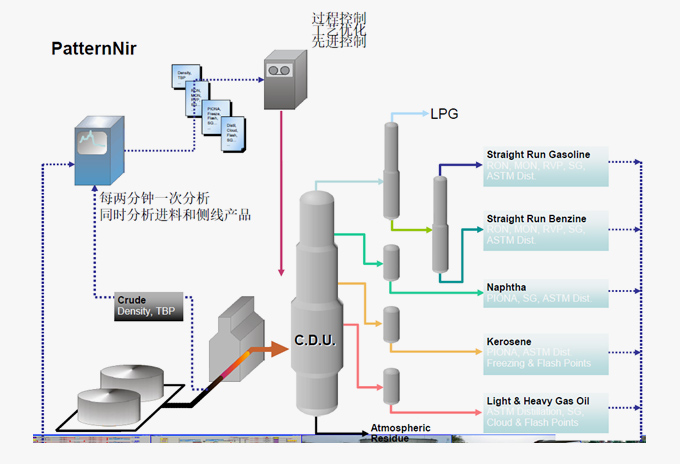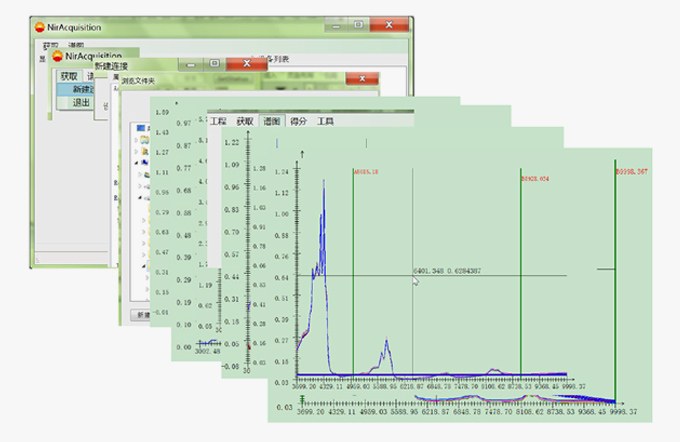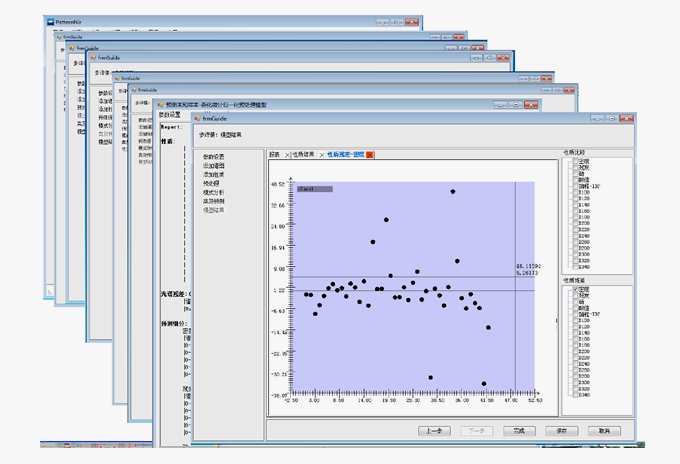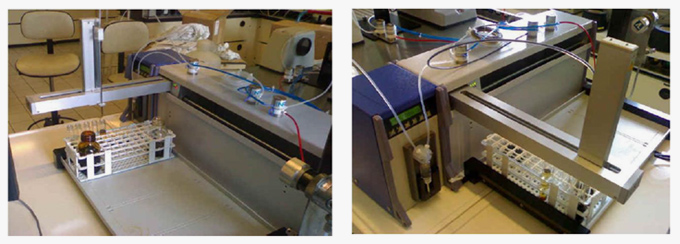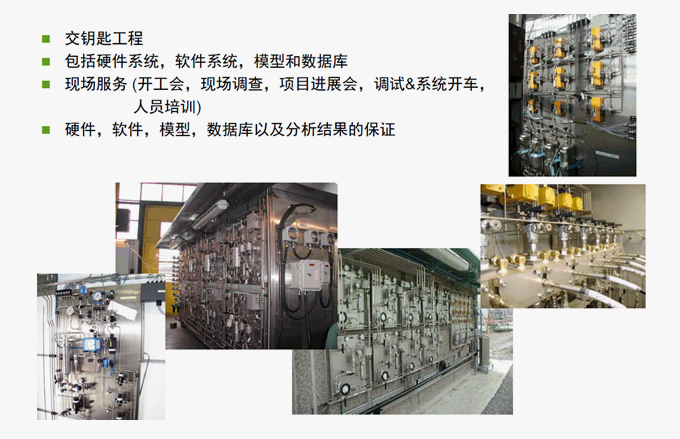Overview
The goals of crude oil blending:
The goal of crude oil blending is to promote the coordination of various business links from crude oil procurement to processing, and to improve the overall management level of the crude oil supply chain.
In terms of system functions, it is necessary to maximize the benefits of the planning link, optimize the blending and scheduling of the offline blending link, the control precision of the online blending link, the automation of tank farm movement and information collection, and the integration of information integration to improve The safety level of tank farm operation; in terms of information platform, it is necessary to fully consider the characteristics of headquarters, storage and transportation branches, oil transmission stations, production enterprises, hierarchical control, and wide geographical distribution. The system will be established on the existing WEB platform.
Disadvantages of manual blending:
Manual blending method: put each gasoline component into the semi-finished product tank according to the pre-calculated ratio, turn on the pump and stir in circulation, take samples for inspection after the mixing is complete, pour the gasoline into the finished product tank if it is qualified, and put it in the semi-finished product tank if it is unqualified Re-add the component oil and make adjustments until the inspection is qualified.
Disadvantages of manual method: long mixing time; high re-adjustment rate; excessive quality; high energy consumption and low efficiency.
Manual blending has become a bottleneck restricting the efficiency of my country's oil refining enterprises.
Brief introduction of Nanjing Viland automatic blending technology:
Foreign countries have applied advanced control technology to more than 90% of atmospheric and vacuum units, catalytic cracking units, hydrogenation units, etc., and achieved considerable benefits.
Nanjing Viland Technology Co., Ltd. has marketed products including: crude oil blending system, gasoline and diesel blending system, online near-infrared oil property analysis system, rapid evaluation system of all oil properties, and device quality optimization control system.
Product qualitative goals:
1) Fully consider the enterprise's demand for product quality upgrading, and meet the higher requirements of the country on the quality index of refined oil;
2) Optimize the component oil formulations of gasoline and diesel, rationally use component oils, and reduce blending costs;
3) Increase the combined power of gasoline and diesel at one time, improve the efficiency of blending, and shorten the blending cycle;
4) Realize precise control of the quality of gasoline and diesel products, reduce excess quality, and increase economic benefits;
5) Optimize the crude oil mixing ratio, realize online crude oil blending, stabilize the total feed properties of the primary processing unit, and reduce crude oil processing costs;
6) Optimize the crude oil blending plan, increase the utilization rate of crude oil, and save crude oil procurement costs;
7) Reduce dependence on experienced technicians and reduce labor intensity of workers;
8) Better monitor the entire blending process, improve storage tank utilization, and reduce inventory.
Product quantitative target:
1) Gasoline blending: On the premise that the sulfur content, olefins, anti-knock index and other indicators meet the quality requirements, the excess octane number is not more than 0.3 units, shortening the single blending time by more than 20%, and the single blending power is not less than 95%.
2) Diesel blending: Under the premise that the cold filter plugging point, flash point, cetane number and other indicators meet the quality requirements, the excess freezing point is not more than 2℃, and the single blending time is shortened by more than 20%. Less than 98%.
3) Crude oil blending: control index API, sulfur content; monitoring index: 38℃, 105℃, 165℃, 365℃ and 565℃ real boiling point yield, total acid value, naphtha yield, reduced residue yield, Viscosity.
Oil product blending business structure plan
· Gasoline and diesel blending business structure plan
Gasoline and diesel online blending can optimize the blending formula in real time by comparing the quality measurement value from the online analyzer and the blending model prediction value based on the constraint conditions such as blending equipment and blending components. The optimized blending formula is transferred to the online recipe execution function. The online recipe execution function can control the entire blending process from the start of blending to the completion of blending, while monitoring equipment failures and process fluctuations. On-line gasoline and diesel blending uses a blending main pipe for blending, with a high power, low quality surplus, and short blending cycle.
Figure-1 The business structure scheme of gasoline and diesel blending
Description of functional architecture scheme of gasoline and diesel online blending system:
Oil blending process management: manage the tank storage information, calculate the blending formula in real-time and online according to the blending order, obtain the optimized blending formula that meets the constraint conditions, and generate a blending report at the same time.
Oil blending executive level: monitor the operating status of the equipment, verify the operability of the blending formula, and perform proportional online blending control of multiple components to complete the oil blending work.
Basic data layer: Provides production dynamic data, equipment static data, oil testing data, etc. for the normal operation of upper-level modules.
Figure-2 Functional architecture scheme of gasoline and diesel online blending system
General functional module description of gasoline and diesel blending system:
Process data acquisition module: real-time acquisition of the adjustment process parameters such as flow rate and liquid level of the tank area control system, and provide data information for the calculation of the adjustment software.
Online analyzer data acquisition module: Collect the quality monitoring data of gasoline and diesel blending components and refined oil after the blending head in the online analyzer to the online formula optimization calculation module to provide data information for formula optimization calculation.
Online blending recipe execution module: including online continuous control, early warning of blending common accidents, blending status monitoring and fine-tuning of quality indicators. When the online formula optimization calculation is not enabled, the manually entered formula can be executed separately. When the online formula optimization calculation is enabled, the optimized formula is executed, and the field instruments, valves and other equipment are controlled through the control system (DCS/PLC).
Online optimization formula calculation module: It consists of three sub-functions: formula management, blending optimization calculation, and blending report. Through formula management, the online formula execution module delivers the blending formula. The blending optimization calculation function optimizes the blending formula based on the feedback data provided by the crude oil rapid evaluation system and the online analyzer, and provides data information for the blending report.
Tank storage information management module: The tank storage information management module includes the collection and calculation of information such as tank level, temperature, tank capacity table and volume, and provides corresponding data for the calculation software.
LIMS data integration module: Automatically collect laboratory data related to oil blending in the LIMS system to provide basic data for blending calculations.
· Crude oil blending business structure plan
Crude oil online blending According to crude oil evaluation data, density/sulfur analyzer, rapid crude oil evaluation, on-site metering and other information, the blending formula is optimized and calculated, and then the online formula execution function is used to control the flow of each component of the crude oil to group the crude oil to be blended. At the same time, it is sent to the blender for uniform mixing. After blending, the crude oil is sent to the distillation unit through the buffer tank as the feed. Online crude oil blending uses a blending header for blending, with short blending time, uniform mixing and high control accuracy.
Figure-3 Business structure scheme of gasoline and diesel blending
Description of the functional architecture scheme of the crude oil online blending system
Oil blending process management: management of tank storage information, integration of crude oil test data in LIMS, integration of crude oil evaluation database, optimization of crude oil blending plan, calculation of crude oil properties to obtain the properties of crude oil in the component tanks, according to blending Order online optimization and calculation of the blending formula, obtain the most optimized blending formula that meets the constraint conditions, and generate a blending report at the same time.
Oil blending executive level: monitor the operating status of the equipment, verify the operability of the blending formula, and perform proportional online blending control of multiple components to complete the oil blending work.
Basic data layer: Provides production dynamic data, equipment static data, oil testing data, etc. for the normal operation of upper-level modules.
Figure-4 Functional architecture scheme of crude oil online blending system
Description of the overall functional modules of the crude oil blending system:
Process data acquisition module: real-time acquisition of the adjustment process parameters such as flow rate and liquid level of the tank area control system, and provide data information for the calculation of the adjustment software.
Online analyzer data acquisition module: Collect the crude oil blending components and crude oil density or sulfur monitoring data after the blending head in the online density/sulfur analyzer to the online formula optimization calculation module to provide data information for formula optimization calculation.
Crude oil rapid evaluation system data collection: After the crude oil is quickly evaluated, the evaluation data of the crude oil blending components and the blended refined crude oil are collected to the online formula optimization calculation module to provide data information for the formula optimization calculation.
Online blending recipe execution module: including online continuous control, early warning of blending common accidents, blending status monitoring and fine-tuning of quality indicators. When the online formula optimization calculation is not enabled, the manually entered formula can be executed separately. When the online formula optimization calculation is enabled, the optimized formula is executed, and the field instruments, valves and other equipment are controlled through the control system (DCS/PLC).
Online optimization formula calculation module: It consists of three sub-functions: formula management, blending optimization calculation, and blending report. Through formula management, the online formula execution module delivers the blending formula. The blending optimization calculation function optimizes the blending formula based on the feedback data provided by the crude oil rapid evaluation system and the online analyzer, and provides data information for the blending report.
Crude oil blending plan optimization: Calculate the initial blending formula through statistics of equipment, inventory, market and other information to generate crude oil blending plan, which can generate blending orders in units of weeks, days, and hours.
Tank storage information management module: The tank storage information management module includes the collection and calculation of information such as tank level, temperature, tank capacity table and volume, and provides corresponding data for the calculation software.
LIMS data integration module: Automatically collect laboratory data related to oil blending in the LIMS system to provide basic data for blending calculations.
Crude oil evaluation database integration module: Integrate the existing crude oil evaluation database data of the enterprise to provide calculation basis for calculating the properties of crude oil after mixing.
Crude oil property calculation module: Use flowmeter or manual data entry to record the changes in crude oil composition, calculate the mixed crude oil properties according to the crude oil evaluation database, and provide other modules with mixed crude oil property data information.
· Overall system architecture
Figure-5 The overall structure of the system
Figure-6 Overall structure of the system (gasoline blending)
Figure-7 Overall structure of the system (diesel blending)
Figure-8 The overall structure of the system (crude oil blending)
Figure-9 System structure
Key technology introduction
Key technology
Nanjing Viland Technology Co., Ltd. oil product online optimization and blending system and petrochemical plant quality optimization control system are based on the following key technologies:
1) Research on non-linear blending rules of oil products;
2) Non-linear optimization algorithm;
3) Model self-learning algorithm;
4) Integrated online optimization algorithm;
5) Flexible control strategy;
6) Integrated near-infrared analyzer control system;
7) Detection of various properties of oil products based on pattern recognition and spectrum mapping.
Research on Blending Rules
Regarding the non-linear characteristics of gasoline blending octane number, the octane number index (EXP) blending rules that meet the processing characteristics of my country's oil refineries are proposed for the first time in the world.
For diesel blending, a state-owned integrated solution was proposed for the first time.
Advanced nonlinear modeling algorithm
For the non-linear properties of gasoline, diesel, and crude oil, such as octane number, freezing point, flash point, cetane number, viscosity, cold filter plugging point, etc., the blending model and the volume and composition of the components are adjusted The properties are all related, and a non-linear model prediction algorithm that can be used with any enterprise has been developed.
Figure-10 Reconciliation rules
Model self-learning method
Figure-11 Model self-learning method
Integrated online optimization algorithm
The developed online optimization algorithm adopts the corresponding optimization algorithm according to the different stages of the online system operation to ensure the stable operation of the online system.
Figure-12 Online optimization algorithm
Flexible blending strategy
The developed integrated online optimization algorithm can meet the complex blending process involving direct tuning components in multiple blending masters.
Figure-13 Flexible blending strategy
Integrated online near-infrared analyzer control system
The system includes oil properties prediction module, spectrum acquisition module, sampling system switching module, spectrum confirmation module, out-of-bounds detection module, peripheral control and fault diagnosis module, system maintenance module, and spectrum transmission module.
Figure-14 Integrated online near-infrared analyzer control system
Figure-15 The structure of the control system of the line near infrared analyzer
Figure-16 General method of near-infrared spectroscopy analysis
Prediction model of various properties of oil products based on pattern recognition
On the basis of the above cluster analysis, for a certain spectrum to be tested, select an appropriate radius in the class to which it belongs, find the neighboring points whose distance is less than the given radius, and then pass through each of the neighboring points. Properties predict the properties of a given spectrum.
Blending solutions
· Blending solutions
The blending solution of Nanjing Viland Technology Co., Ltd. is as follows:
BBP/BSP: According to component oil production capacity (yield, nature), through the establishment of a virtual blending model of the tank farm, the blending production situation in each blending cycle is predicted, and the constraints of tank storage, pumps, pipelines, etc. are met , Reasonably arrange the blending and scheduling plan to maximize the output of high-grade products, while considering the residual wax oil balance of the refinery.
BOC/BRC: Model-based (blending rules) predictive control of refined oil quality for a certain blending batch, through online feedback of refined oil quality, to correct the drift of blending rules in a small range to ensure model accuracy , To improve the control accuracy, so as to implement precise card edge control on the properties of the refined oil.
Belend Management: By comparing the blending plan with the actual blending results, find out the cause of the deviation, and put forward suggestions to solve the problem, so that the entire system (hardware + software + people) can maintain a long-term, high-level operation.
Figure-17 Blending the solution
Figure-18 Blending solution architecture scheme
· Software system implementation
Figure-19 The main interface of the software
Figure-20 Basic Settings Management
Figure-21 Optimize the scheduling system
Figure-22 Production planning system
Figure-23 Online equipment status monitoring system
Figure-24 Commercial online near-infrared oil analysis system hardware system
Figure-25 Commercial online near-infrared oil analysis system software (PatternNir)
Figure-26 Based on PatternNir crude oil optimized blending system and device optimization system
Figure-27 Near-infrared spectrum acquisition software (NirAcquidition)
Figure-28 Crude oil rapid evaluation system
Figure-29 Stationary oil product rapid evaluation system (hardware)
Figure-30 Crude oil online optimization and blending system (hardware)
Typical performance
1. Storage and Transportation Plant of Yanshan Petrochemical Company
The storage and transportation plant of Yanshan Petrochemical Company, the gasoline online optimization blending system, put into operation in October 2008, blended 7 kinds of component oils: double fuel gasoline, triple fuel gasoline, reforming, MTBE, C7C8, alkylated gasoline, Heavy naphtha. The finished gasoline is Beijing standard 93#, 97#, 90#, and national standard 93#, 97#, 90#.
The system is equipped with two blending headers, each with a maximum blending capacity of 250m³, and each header can blend various grades of refined oil. The annual blending of gasoline is 2.3 million tons, and the annual benefit is about 32.76 million yuan. Since the system was put into operation, the optimization system has been running online.
Adopt ABB's online near-infrared system with sampling system and pre-processing.
2. Refinery of Daqing Petrochemical Company
Daqing Petrochemical Company's refinery, gasoline online optimization blending system, put into operation in October 2007, blending six kinds of component oils: 1 heavy fuel gasoline, 2 heavy fuel gasoline, reformed gasoline, MTBE, aromatics, low octane number Low-olefin gasoline. The finished gasoline is: national standard 93#, 97#, 90#, ethanol 93#, 97#, 90#.
The system is equipped with a blending master, the maximum blending capacity is 200m³/h, the annual contract capacity is 1.2 million tons, and the annual benefit is about 17.9 million yuan. The system has been running online since it was put into operation.
It adopts Avans GUIDED WAVE's near-infrared system, without pre-processing system, and adopts pipeline direct plug-in type.
3. Refinery of Dushanzi Petrochemical Company
Dushanzi Petrochemical Company's refinery, diesel online optimization blending system, its blending components mainly include: hydrogenated straight-run diesel, hydrocatalyzed coking diesel, hydrocracked light diesel, hydrocracked heavy diesel, and blended diesel The grades include: 35# diesel, 20# diesel, 10# diesel, 0# diesel.
The system is equipped with two blending heads, each of which has a maximum blending capacity of 700m³/h, and blends approximately 5 million tons of diesel per year.
The first line of blending mainly blends 0# diesel oil, and the component oil is directly injected into the blending line from the device without passing through the blending pump. The blending line 1 is continuous blending, 24 hours uninterrupted blending, and the excess component bypasses into the excess component tank.
When the excess components accumulate enough, start blending line 2. This blending line mainly blends low-pour point diesel such as 10#, 20#, 35#, etc. The line adopts intermittent blending mode.
The system was officially put into operation in May 2012, creating economic benefits of 540 million yuan each year.
Adopt TOPNIR near-infrared online analyzer system, with sampling pretreatment system.



